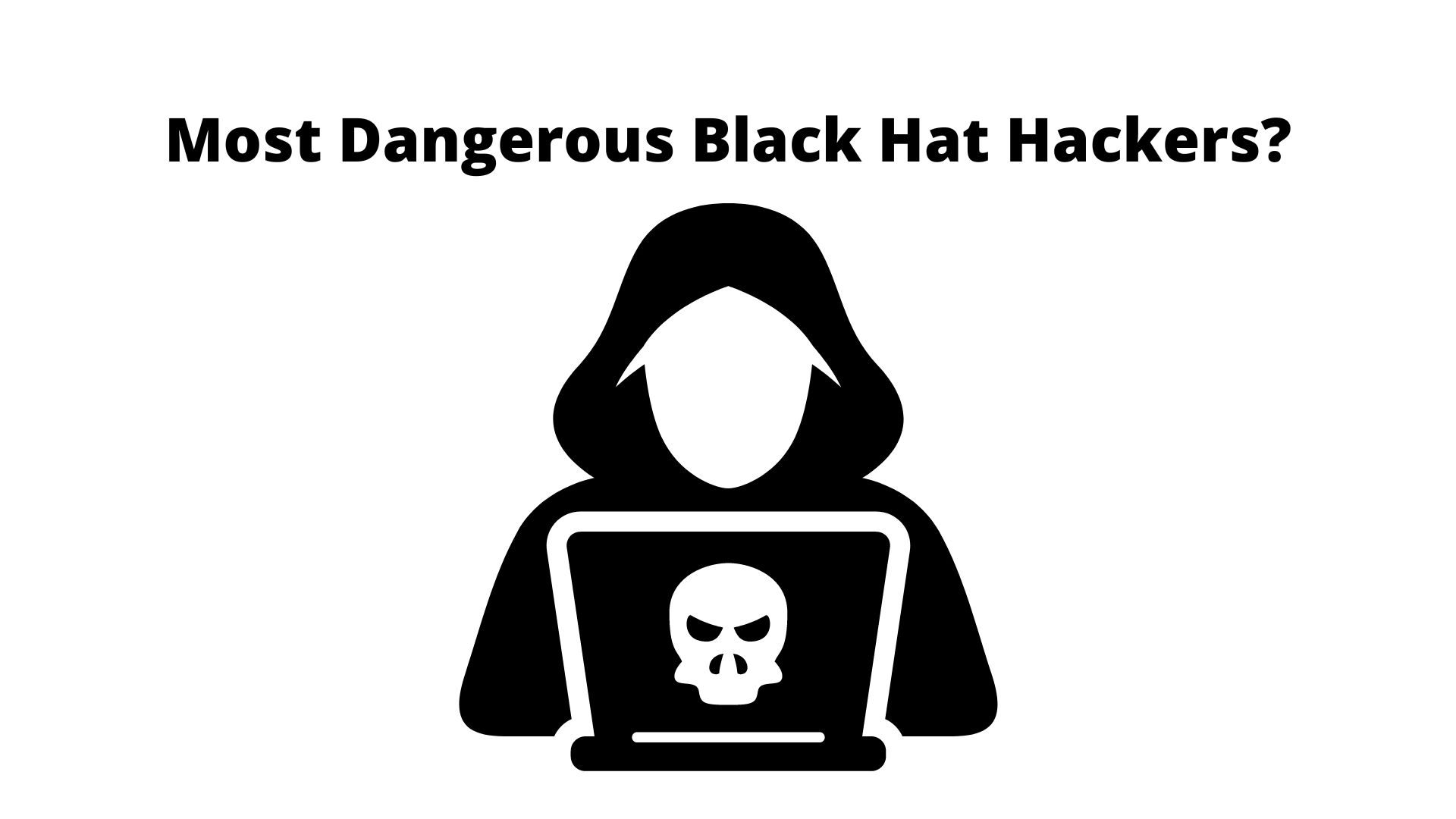Mysterious Hackers Revealed: Who Are The Most Dangerous Black Hat Hackers?

Page Contents
In this article we will reveal who are the most dangerous black hat hackers?: Hacker communities are diverse all over the globe. Hackers hack computers to improve their security and vulnerabilities. Hackers, on the other hand, can target computers for financial gain, or as part of cyber attacks. Different hat colors signify different types of hackers. This article will focus on the black hat hacker.
Black Hat Hackers – Definition
Hacking is often linked to illegal activities. Some hackers are also cybersecurity specialists, helping to strengthen the digital immune system. These hackers are often referred to as white-hat hackers. However, their malicious counterparts don black hats. What is a “black-hat hacker?”
Black-hat hackers use malware and phishing to steal data or penetrate networks with malicious intentions. They may be motivated by political, financial, or just plain egotism. These hackers know that they are breaking the law and are aware of the potential consequences. They try to conceal their identities.
Most hackers are very skilled and offer their services to the highest bidder. They can be of any age, gender, or race, and they have “day jobs.” These people are bad people who can work independently or in groups.
Types of Hacking
Black-hat hackers hack computer networks, steal confidential data, delete files, and blackmail victims. These crimes are committed every day. These are the top hacking attacks on the black hat ecosystem.
- Ransomware – Hackers install ransomware that permanently blocks access to victims' files and systems. In exchange for access to the data, the hacker demands a ransom. Black hats who commit this hack could face 20 years imprisonment if caught.
- Fake W.A.P. – This is a technique that uses software to impersonate W.A.P (wireless access point) or other wireless access points. Once they establish a connection with the fake W.A.P, the hacker can gain access to the victim's data.
- Phishing – Hackers create fake pages and send emails pretending that they are legitimate companies or institutions the victim is in touch with. These messages are often designed to trick recipients into clicking on malicious links that will allow hackers to steal their login credentials or other private information.
- Keylogger – Software that captures every keystroke is called keyloggers. The hacker can access any information the victim enters, even confidential data.
- Bait and Switch Attack: – Hackers might purchase advertising space, insert malicious links, and infect your computer when you click on them. Victims may accidentally download viruses by clicking on advertisements.
Recognizing The Color Coding
We are now aware of what white and black hat hackers do. Let's take a closer look at the reasons for these classifications. These words came from 1950s Westerns when the good guys wore white and bad people wore black hats, and other guys wore light colors. There are different types of hackers, including blue hats, red hats, grey hats, and green hats.
The complete opposite of black hat hackers is white hat hackers. They mainly attack computer systems to reveal vulnerabilities and increase security.
On the other hand, gray hat hackers are somewhere in the middle. While they will not use their knowledge to steal, extort, or threaten online users. They frequently hack networks and systems without permission to highlight security problems. Unlike black-hat hackers, computer security is an essential aspect of gray hat hackers.
However, most grey hat hackers value computer security, unlike black hat hackers. In a few instances, people agree to pay a fee to remedy flaws.
Even while this kind of hacking can raise security levels, it is still unlawful, mainly because these “tests” are conducted without permission.
In contrast to grey hat hackers, black hat hackers are more interested in exposing security flaws for their own benefit than in exposing them for their personal gain. They have penetrated governments, big businesses, religious organizations, phone companies, and even the CIA.
Many of the white hat hackers of today are former-black hat hackers who changed their sides. They can now apply their knowledge without endangering their freedom and doing enormous harm to people and businesses.
The Most Infamous Black Hat Hackers
Black hats were not a hindrance to cybersecurity measures. Here are some names of some of the world's most famous hackers:
Kevin Mitnick currently runs a security consulting company, but around thirty years ago, he used to be the FBI's most wanted criminal cybercrime. Some believe that he simply attempted to hack into computers in order to expose their flaws. He was a hacker for government networks and phone companies and ended up in prison. He became a black-hat hacker and a cybersecurity consultant. Mitnick Security Consulting's CEO and Chief Hacking Officer, also serves.
Adrian Lamo has a reputation for notifying victims and the media after an attack. The New York Times was one of his victims. He was also well-known because he turned in Chelsea Manning to WikiLeaks for stealing documents from the government.
Kevin Poulsen was the one behind hacking government computers including the Pentagon's network. He enjoyed a successful career in hacking and confessed to hacking a radio contest to win a luxury car, $20,000 cash prize, a vacation, and a getaway.
Conclusion
Who are the most dangerous black hat hackers revealed – Television coverage of black-hat hackers' lives can be quite entertaining but they are a grave threat to people, businesses, government, and institutions. They can steal state secrets and compromise personal and financial information. They can cause serious damage to society because they are likely to accept jobs at the highest price.

Dan Muse is a journalist and digital content specialist. He was a leader of content teams, covering topics of interest to business leaders as well as technology decision makers. He also wrote and edited articles on a wide variety of subjects. He was the editor in Chief of CIO.com (IDG Brands) and the CIO Digital Magazine. HeI worked alongside organizations like Drexel University and Deloitte. Specialties: Content Strategy, SEO, Analytics and Editing and Writing. Brand Positioning, Content Management Systems. Technology Journalism. Audience development, Executive Leadership, Team Development.



